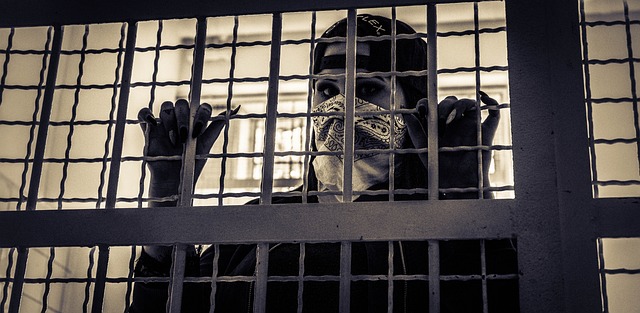DUI laws vary significantly between rural and urban areas due to differing population densities and community structures. While urban regions emphasize strict visibility and enforcement, rural areas focus on education and prevention due to lower crime rates and specific challenges like darker roads. Emerging technologies, such as advanced breathalyzer devices, data analytics, and mobile apps, play a crucial role in modern DUI law enforcement. These innovations enhance efficiency, strategic resource deployment, and road safety in both settings, overcoming challenges posed by limited staffing and funding. In rural areas, GPS tracking and advanced breathalyzers provide real-time safety, while urban jurisdictions leverage AI and machine learning for targeted police patrols and personalized prevention tools.
In the realm of drunk driving prevention, a stark contrast exists between rural and urban DUI laws. While uniform across all states, local nuances create disparities in legislation, significantly impacting enforcement strategies. This article delves into these differences, focusing on emerging technologies in DUI law, such as GPS tracking and breathalyzers. We explore how advancements in data analytics are revolutionizing urban approaches while examining challenges faced by rural areas due to limited resources, ultimately highlighting the need for tailored solutions in both settings through the lens of Emerging Technologies in DUI Law.
- Understanding DUI Laws: A Comprehensive Overview
- Rural vs Urban: Defining the Disparities in Legislation
- Emerging Technologies: Their Impact on DUI Enforcement
- The Digital Revolution: GPS Tracking and Breathalyzers
- Challenges in Rural Areas: Limited Resources and Accessibility
- Urban Adaptations: Advanced Data Analytics and Prevention Strategies
Understanding DUI Laws: A Comprehensive Overview

DUI laws, or driving under the influence, are designed to keep roads safe and prevent tragic accidents. Understanding these laws is crucial, especially when comparing rural and urban jurisdictions. In recent years, emerging technologies have played a significant role in enhancing DUI enforcement. For instance, breathalyzer devices have become more advanced, providing faster and more accurate readings. Additionally, new apps and software enable law enforcement to efficiently manage DUI cases, track offenders, and share vital information.
While basic DUI regulations are consistent across regions, rural and urban areas may have distinct implementations. Urban areas often employ higher visibility and strict enforcement strategies due to the dense population and heavy traffic. In contrast, rural jurisdictions might focus on education and prevention programs due to lower crime rates and unique challenges like darker roads and fewer bystanders. These variations highlight the need for a comprehensive understanding of local laws when driving in different environments.
Rural vs Urban: Defining the Disparities in Legislation

In the realm of DUI (Driving Under the Influence) legislation, a striking disparity emerges between rural and urban areas, reflecting broader societal and legal nuances. Rural regions, characterized by lower population densities and distinct community dynamics, often lag in uniform DUI laws compared to their bustling urban counterparts. This gap is further widened by the influence of emerging technologies in DUI law enforcement, which may not be as readily adopted in remote areas due to infrastructure limitations and varying legislative priorities.
While urban centers have been quick to adapt to technological advancements such as breathalyzer devices and advanced surveillance systems to combat DUI incidents, rural jurisdictions face unique challenges. Limited access to resources, along with the vastness of geographic areas, can hinder the implementation of stringent DUI laws that are effective in densely populated regions. As a result, rural DUI legislation often lacks the granular detail and innovative measures found in urban legal frameworks, leading to potential disparities in prosecution and sentencing.
Emerging Technologies: Their Impact on DUI Enforcement

The application of emerging technologies has significantly influenced how law enforcement agencies approach DUI (Driving Under the Influence) enforcement, both in rural and urban areas. With advancements in vehicle technology, data analytics, and mobile applications, authorities now have access to more sophisticated tools to detect and prevent drunk driving. For instance, modern vehicles are equipped with advanced driver-assistance systems (ADAS) that can detect and alert drivers about potential hazards, including instances of impaired driving.
Furthermore, the integration of data analytics enables law enforcement to identify patterns and hotspots for DUI incidents. This information allows them to strategically deploy resources more effectively, especially in rural areas where limited staffing and funding may pose challenges. Additionally, mobile applications designed for public safety can empower citizens to report suspected drunk drivers, enhancing community involvement in DUI prevention efforts. These emerging technologies are reshaping DUI law enforcement, increasing efficiency, and ultimately contributing to safer roads across both urban and rural landscapes.
The Digital Revolution: GPS Tracking and Breathalyzers

The digital revolution has significantly transformed how law enforcement agencies tackle DUI (Driving Under the Influence) cases, especially in urban and rural settings. Emerging technologies like GPS tracking and breathalyzers have become powerful tools in navigating this complex legal landscape. GPS devices can be used to monitor drivers’ movements, helping authorities pinpoint locations and track potential impairment patterns. This is particularly useful in rural areas where law enforcement may face longer response times, providing a real-time safety net for communities.
Breathalyzer technology has also advanced, offering more accurate and immediate results. These devices can be deployed at various checkpoints or even integrated into police vehicles for on-site testing. In urban environments with higher traffic densities, such tools aid in quick decision-making, ensuring public safety while streamlining the legal process. This blend of science and law marks a new era in DUI enforcement, where emerging technologies play a pivotal role in shaping fair and effective rural versus urban DUI laws.
Challenges in Rural Areas: Limited Resources and Accessibility

In rural areas, law enforcement faces unique challenges when it comes to enforcing DUI (driving under the influence) laws. One significant hurdle is the limited resources available compared to urban centers. Smaller police departments often have fewer officers and less advanced equipment, making it harder to detect and deter drunk driving effectively. Additionally, accessibility issues contribute to these difficulties. Rural roads may be less populated, leading to fewer witnesses and more challenging evidence collection. Emerging technologies in DUI law, such as advanced breathalyzer devices and remote alcohol monitoring, could be transformative for rural communities, providing enhanced tools for law enforcement despite resource constraints.
The remoteness of rural locations also means that suspected DUI drivers might attempt to evade capture by fleeing through backroads or hiding in less-traveled areas. This increases the challenge for officers who must adapt their strategies to navigate these labyrinthine landscapes. As a result, rural DUI cases often require more creative problem-solving and innovative use of resources to ensure public safety.
Urban Adaptations: Advanced Data Analytics and Prevention Strategies

In urban areas, where advanced data analytics are increasingly integrated into law enforcement strategies, DUI prevention has seen significant enhancements. Technologies like artificial intelligence (AI) and machine learning can analyze vast datasets to predict high-risk zones and times for impaired driving, enabling targeted police patrols and proactive interventions. For instance, AI-powered systems can process historical driving records, weather data, and even real-time traffic conditions to identify patterns indicative of DUI incidents, helping urban law enforcement agencies allocate resources more efficiently.
These emerging technologies in DUI law are not just about prediction but also personalized prevention. Apps and digital platforms tailored for urban drivers offer tools like breathalyzer tests integrated directly into mobile devices, providing instant feedback on blood alcohol levels. Such innovations foster a culture of responsible drinking by offering immediate accountability and encouraging safer choices among urban dwellers accustomed to the hustle and bustle of metropolitan life.
In conclusion, the disparities between rural and urban DUI laws highlight the need for a nuanced approach to drunk driving prevention. While emerging technologies like GPS tracking and breathalyzers have significantly enhanced enforcement in urban areas, rural communities face unique challenges due to limited resources and accessibility issues. Advanced data analytics prove crucial in urban adaptations, enabling targeted strategies that can be adapted for rural settings through innovative solutions. As we move forward, integrating these technologies and strategies can lead to more effective and equitable DUI law enforcement across all regions, focusing on both prevention and fair application of the law.






